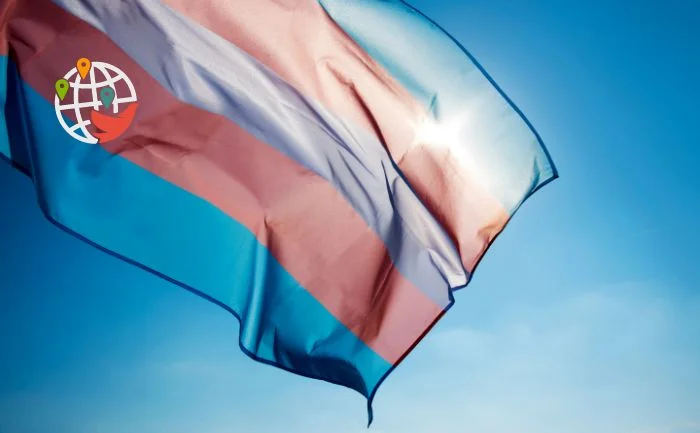Transgender athletes in women's sports: enough already?

Let's discuss the most high-profile scandals related to LGBTQ+ issues in sports in Canada and the US.
The topic has sparked discussions multiple times, but in the last month, there have been three conflicts in Canada and its neighbor, America, that have divided society into two camps. They are related to the participation of transgender athletes in women's sports.
It should be noted that in Canada and the United States, laws are in place that allow anyone who identifies as a woman to participate in women's competitions. There are no requirements for confirmation of gender identity, only the participant's word is sufficient. Even if the athlete has a beard, broad shoulders, and wrists wider than those of their female competitors.
Canadian powerlifting coach Avi Silverberg used these rules to his advantage. However, he entered the women's competition to protest. The strong athlete instantly broke all possible records, lifting a weight from his chest that exceeded his own weight. He did this to demonstrate the absurdity of gender rules in the Canadian and American Powerlifting Federation. He also responded to transgender athlete Anne Andres.
Andres, who visually differs little from the man she previously was, holds the last record in Canada's super heavyweight category. She won 8 out of 9 competitions she participated in and mocked her female competitors, calling them weak.
Angry girls first turned to the national powerlifting federation but did not receive a response. Then they called on Avi for help, who couldn't refuse them, because he considers the gender self-identification rule in sports to be madness. Anne Andres herself called the new women's champion a coward and a hypocrite.
A similar case occurred in America. The protest was led by Riley Gaines, a 13-time champion of the National Collegiate Athletic Association in swimming. This girl arrived at the finish line at the same time as transgender athlete Leah Thomas.
This is, by the way, a significant achievement. Leah looks like a typical athletic man, tall and broad-shouldered. Her limbs are much longer than Riley's, a rather fragile girl. In swimming, your build matters a lot, and usually, a tall and broad-shouldered swimmer will be faster than a miniature opponent. However, Riley swims so fast that she can compete with professional male swimmers.
Therefore, she shared first place with Leah. The University of Pennsylvania preferred to award Thomas the prize. According to them, she needs it more — she had already planned a photoshoot. Now Riley and other participants are trying to achieve justice, signing a petition and bringing the incident to the attention of the media.
Gaines and her colleagues complain that they had to change clothes in the same locker room as Thomas, who has retained male reproductive organs. The competition organizers did not ask the girls for permission and presented them with a fait accompli. Later, in an interview, Riley admitted that some girls started crying with shame.
By the way, transgender celebrity Caitlyn Jenner, who was a male athlete and won all her awards as Bruce in the past, believes that Thomas' victory is unfair.
In Canada and the US, there has been a long-standing discussion about whether to ban transgender athletes from participating in women's sports. Supporters of the ban point out that in professional sports, an athlete's physical characteristics such as height, weight, back width, leg length, and so on, play a significant role. Runners are usually lean and long-legged, powerlifters are compact and short-armed, and swimmers have broad backs and long limbs. Furthermore, the hormone testosterone is an excellent performance-enhancing drug as it increases strength and endurance. Therefore, allowing former men to participate in women's competitions is considered unfair as transgender athletes outperform biological women physically.
However, opponents of the ban argue that biological advantages are not exclusive to transgender people but are also present in ordinary individuals. For example, Soviet basketball player Ulyana Semenova was born a woman but had a rare genetic anomaly — non-pathological gigantism. Her height, as her colleagues nicknamed her "Gulliver in a skirt," was 2.13 meters. Semenova was two or three heads taller than her opponents and could put the ball in the basket without jumping. However, no one doubted the fairness of her victory. Supporters of transgender female athletes argue that we should either exclude all individuals who outperform their competitors physically or allow athletes who have changed gender to participate. What do you think?
Active discussions among Canadians were triggered by an interview with hockey player P.K. Subban. In 2022, he announced his retirement from professional hockey and departure from the National Hockey League. However, journalists still invite him to speak as he is one of Canada's most famous athletes.
Subban said that athletes are not obligated to be activists and promote any ideas, including publicly supporting LGBTQ+ by wearing rainbow-themed clothes at matches. According to him, all segments of society deserve respect and protection of their rights, but the duty of athletes is to play well and promote a healthy lifestyle. P.K., who has often become a mouthpiece for government initiatives, believes that it is unfair to athletes and deprives them of choice. Many Canadians supported Subban and stated that they expect victories from athletes, not activism. Some believe that the former defender is wrong: athletes' refusal to publicly support LGBTQ+ and other minorities makes them feel uncomfortable at sporting events.
What do you think about these situations? Share your opinion in the comments.





























